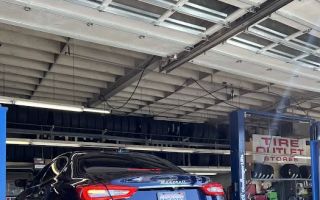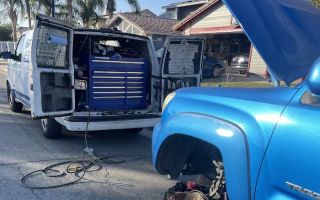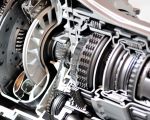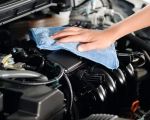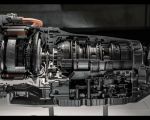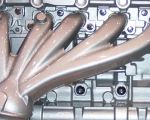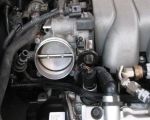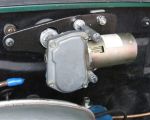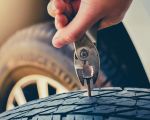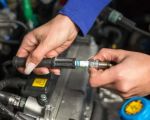Have you ever been in a situation where your car simply wouldn’t start, and you were left with the idea of jump-starting it? Whether it's a dead battery or some other issue, jump-starting seems like a quick and easy fix. However, as tempting as it might seem, I’ve learned over time that jump-starting a car can actually be more risky than most people realize. The process of connecting two vehicles together with jumper cables might seem straightforward, but it can lead to serious damage, injuries, or even worse, if not done correctly. In this article, I’ll walk you through why jump-starting your car can be a lot more dangerous than it appears, and why it’s important to take proper precautions or consider other alternatives.
1. The Risk of Electrical Hazards
One of the first things you should be aware of when jump-starting a car is the electrical risk involved. Both vehicles are connected via jumper cables to transfer power from one battery to another, but this creates an electrical circuit that can be dangerous if handled improperly. When working with car batteries, there's always the potential for sparks. These sparks could cause an explosion in a highly charged environment, particularly if the battery has been damaged or is leaking gas.
I learned this the hard way when a small spark caused the battery to leak acid, which damaged the surrounding components of the engine bay. In some cases, if the connections are not made correctly, the electrical charge can also short-circuit the vehicle’s system, rendering your car useless and leaving you with even bigger problems. All it takes is a slight mistake in the connection, and you might cause a short that could fry your electrical components. The risk isn’t just confined to your car; the vehicle you're using to jump-start also faces potential issues from faulty connections, which can damage its own battery and electrical systems.
2. Battery Explosion
Another severe risk is the potential for a car battery explosion. While this may sound extreme, it is not as rare as you might think. Car batteries, especially older ones, can emit hydrogen gas. When you connect jumper cables improperly or cause a spark, that hydrogen gas can ignite, leading to an explosion. This can cause serious injury or even death. It’s critical to follow every step meticulously to avoid such an outcome.
My friend once experienced this firsthand when they were jump-starting a car in a poorly ventilated space. The hydrogen gas built up, and when the cables were connected incorrectly, there was a burst of flame. Thankfully, they weren’t injured, but the incident resulted in a completely ruined battery and damage to the engine compartment. It was an eye-opener for both of us. It made me realize how easy it is to overlook the proper safety measures when you’re in a hurry to get your car running again.
3. Alternator Damage
Another reason why jump-starting a car can be risky is the potential for damage to your alternator. While you’re trying to charge the dead battery of your car, the alternator in your vehicle plays a critical role in this process. However, if jump-starting is done improperly, the surge of power being fed from one battery to another can strain the alternator. If the cables are connected wrong or the car is jump-started multiple times in quick succession, you could end up damaging the alternator or other essential components of the charging system.
In my own experience, I once noticed that after using jumper cables to revive a dead battery, my alternator started to make strange noises, and eventually, the car wouldn’t charge properly. I had to replace the alternator, which was a costly repair. It became clear that jump-starting improperly can overload the alternator, particularly if it's an older vehicle with a worn-out charging system.
4. Battery Damage
Let’s not forget that jump-starting your car can also damage the battery itself. Car batteries are sensitive to the flow of electricity, and if the electrical current is sent through improperly, it can cause internal damage to the battery’s cells. This results in the battery losing its capacity to hold a charge, making it difficult for the car to start the next time. The next thing you know, you're facing a costly replacement of the battery that could have been avoided.
It’s happened to me before where after a jump-start, the battery lasted for a few more weeks, but then it started to fail repeatedly. I ended up spending money on a new battery much sooner than I anticipated, simply because I didn’t connect the cables correctly or used a car with an incompatible battery type for the jump-starting procedure.
5. Injury Risk
Aside from the risks to the car’s electrical system, there’s also a significant risk of personal injury. Handling jumper cables and batteries requires a bit of physical effort and proximity to some volatile components. If you accidentally touch the wrong terminal or allow the cables to slip, you could get a nasty electrical shock. Even a mild shock can cause burns or other injuries, particularly in sensitive individuals. If the battery is leaking acid or there are any other hazardous materials in the engine bay, there’s also the risk of skin burns or eye injury if the acid splashes.
I once saw someone injure themselves while trying to adjust a cable during a jump-start. The cable slipped, and it caused a brief but sharp shock. Though they weren’t seriously hurt, it was enough to highlight just how dangerous the process can be if not done carefully.
6. Potential for Vehicle Damage
Aside from all the electrical hazards and potential personal injuries, the process of jump-starting can also cause damage to the vehicle. For instance, if the cables are not connected to the correct terminals on either battery, you can end up damaging your vehicle’s computer system. Newer vehicles are highly dependent on their onboard computer systems, and a wrong connection can cause a malfunction in critical components like the fuel system, braking system, or air conditioning system. These systems rely on the electrical charge being balanced and controlled, and a surge from jump-starting can easily overload them.
I’ve had situations where after jump-starting a car, strange error codes appeared on the dashboard, and the car started exhibiting weird behaviors. These problems were costly to fix and could have been avoided if I had just paid more attention to the process and taken the time to do it correctly. A simple mistake in the connections could lead to thousands of dollars in repair costs.
7. Environmental Hazards
One often-overlooked risk is the environmental hazard posed by jump-starting a vehicle. When jump-starting a car, there’s a potential for acid leaks, fuel vapors, or other volatile substances to escape into the environment. Car batteries, particularly older ones, can leak sulfuric acid, which is harmful to both the car’s environment and the surrounding ecosystem. It’s essential to ensure that you’re in a safe location, preferably outdoors and in a well-ventilated area, to minimize any potential environmental harm.
On one occasion, after a jump-start in an enclosed garage, I noticed that the smell of sulfuric acid was overwhelming. I had to quickly move the car outside and ventilate the area. It was a clear reminder of how important it is to ensure proper ventilation when dealing with car batteries.
If you ever feel unsure about the process or don’t want to risk any of these issues, it's always better to call in professionals. A towing service or a roadside assistance provider like Rescue & Towing can handle the job safely and efficiently, preventing any unnecessary risks or damage. Their services ensure that your car is safely jump-started without any further complications.
In the end, although jump-starting your car might seem like a quick fix, the risks involved are considerable. From electrical hazards to potential damage to both your car and the surrounding environment, it’s not something to take lightly. If you're ever in doubt, I strongly recommend reaching out to a professional service to avoid these dangerous and costly mistakes.





